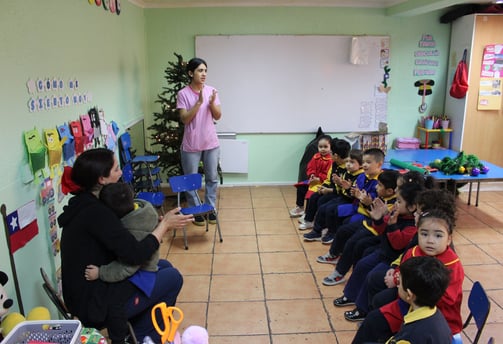Psychoeducational strategies for behavioural management in preschoolers
Bridge-Nest
4/17/2025


As educators we must be actively involved in the search for strategies to create an environment conducive to learning for all our students including children who present a more disruptive behaviour in the classroom and it is from there, where the concern about what are psychoeducational strategies? We can say that they are those actions in which teachers, parents and guardians can accompany students through different techniques and strategies focused on increasing the likelihood that children develop effective behaviours that can last over time.
Our main objective as educators is always to know the personal history of each student, to find out if there are possible family, psychological or learning problems, or if there are other factors that influence the behaviour of children in the classroom. That is why it is important to provide our students with strategies that favour self-control in order to reduce their disruptive behaviour and to be able to observe an improvement in their behaviour that affects the teaching and learning process.
What strategies can we use to improve behavioural management in preschoolers?
The first thing to do is to make them aware of well-defined rules and responsibilities both in the classroom and in their family environment, role-plays that will help them to identify their conflicts and resolve them through modelling guided by the adult, helping them to become aware of their behaviour.
Activities to educate emotions, where we can work on identifying emotions in them and in others and thus achieve a more empathetic attitude, generating positive emotions.
Encourage collaborative work considering skills, talents and achievements of the student, traffic light technique (red card stop/yellow card think/green card act), the aim is that students try together to obtain a good behaviour inside the classroom, through games and the clear establishment of times and moments in which they can perform some behaviour.
On the other hand, we can support the actions described above by rewarding effort. In this type of strategy, the aim is to emphasise achievement, however minimal it may be during the class, we can use smiley faces stuck in their notebooks, drawings to colour in and a congratulatory note for the students to take home signed by the teacher.
Another favourable strategy is to implement a space for relaxation and reflection in a corner of the classroom where we should have materials linked to the identification of emotions, anti-stress balls, a dice of emotions, finger puppets, in that space students can tell stories about how to resolve everyday conflicts.
Behavioural management is a task that requires effort, perseverance and dedication. The strategies mentioned above can help us to favour the learning of all students and to be able to carry out the routine and activities planned by the teacher in the best possible way so that they are meaningful for each child, achieving the construction of learning and reaching the objectives set in an effective environment.
BRIDGE-NEST
Connecting hearts, building futures.
CONTACT
+1 (407) 2028827
© 2025. All rights reserved.


Mailing Address
4855 W HILSBORO BLVD STE B3. COCONUT CREEK, FL 33073
